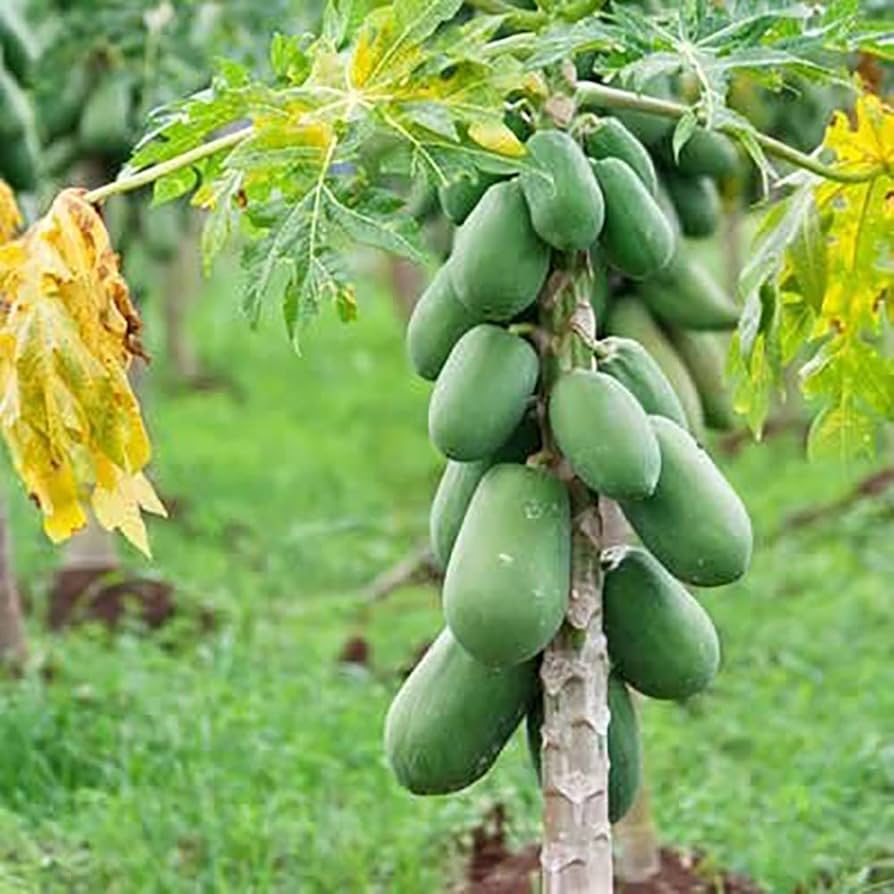
Unlocking the Potential of Pawpaw Farming: Health Benefits and Market Demand
Pawpaw farming can thus offer both health benefits and financial opportunities for growers, with demand driven by health trends
Pawpaw farming, especially in tropical and subtropical regions, can be a lucrative and rewarding agricultural venture. Pawpaws, also known as papayas, are fast-growing fruit trees that bear fruit in as little as 6-12 months, depending on the variety and growing conditions. Here’s a breakdown of the key aspects of pawpaw farming, its health benefits, and the market demand.
Pawpaw Farming Basics
- Climate and Soil Requirements: Pawpaw trees thrive in warm climates with consistent sunlight and well-draining soil, rich in organic matter. They are sensitive to waterlogging, which can lead to root rot, so proper drainage is essential.
- Planting: Pawpaws can be grown from seeds or transplanted as seedlings. Spacing is crucial, as the trees need enough room to spread. Generally, 2.5-3 meters of space between trees is ideal.
- Care and Maintenance: Pawpaws require regular watering, especially during dry spells, and benefit from organic mulching. Applying nitrogen-rich fertilizer or compost helps them grow faster and bear larger fruit.
- Harvesting: Pawpaw fruits are usually ready for harvest 9-12 months after planting. Mature fruits are picked when they start to turn yellow, as they ripen quickly.
Health Benefits of Pawpaws
- Rich in Nutrients: Pawpaws are a powerhouse of essential nutrients, including vitamins A, C, and E, folate, and fiber. These nutrients support the immune system, promote skin health, and improve digestive health.
- Antioxidant Properties: The high levels of antioxidants, such as beta-carotene, can reduce oxidative stress, lowering the risk of chronic diseases like heart disease and cancer.
- Digestive Health: Pawpaw contains papain, an enzyme that aids in protein digestion, making it beneficial for those with digestive issues or irregular bowel movements.
- Heart Health: High fiber content, along with potassium and vitamin C, supports cardiovascular health by helping to manage blood pressure and reduce cholesterol levels.
- Anti-inflammatory Effects: Compounds in pawpaw, such as flavonoids, can reduce inflammation and may be beneficial in managing conditions like arthritis.
Market Demand and Economic Potential
- Growing Demand for Healthy Foods: As people become more health conscious, the demand for fruits like pawpaw, known for their nutritional and medicinal properties, continues to rise.
- Export Potential: In many countries, pawpaws are a valued export, especially to markets in Europe and the Middle East. Fresh, dried, or processed (in products like jams and juices) pawpaws have broad appeal.
- Versatile Use: Besides being eaten fresh, pawpaw is used in a variety of products, such as cosmetics, supplements, and natural remedies. This versatility increases its market demand across multiple sectors.
- Sustainable Income for Farmers: Due to its high yield potential and short time to harvest, pawpaw farming can provide a sustainable source of income for small-scale and large-scale farmers alike.
Pawpaw farming can thus offer both health benefits and financial opportunities for growers, with demand driven by health trends and a growing preference for natural and nutrient-dense foods.
CATEGORIES Fruits

